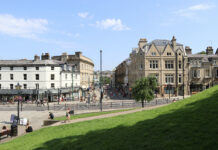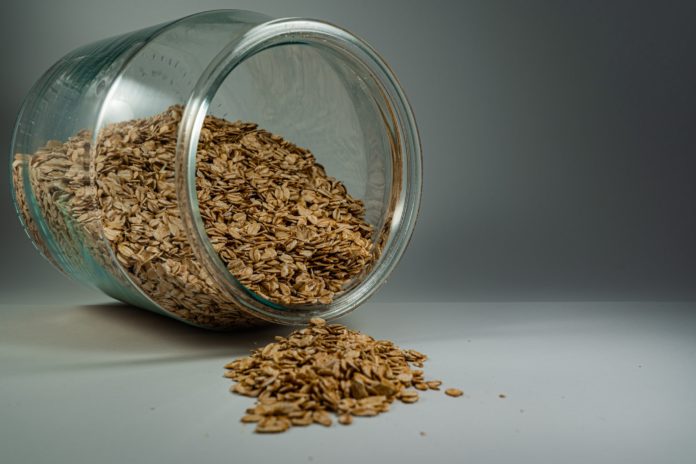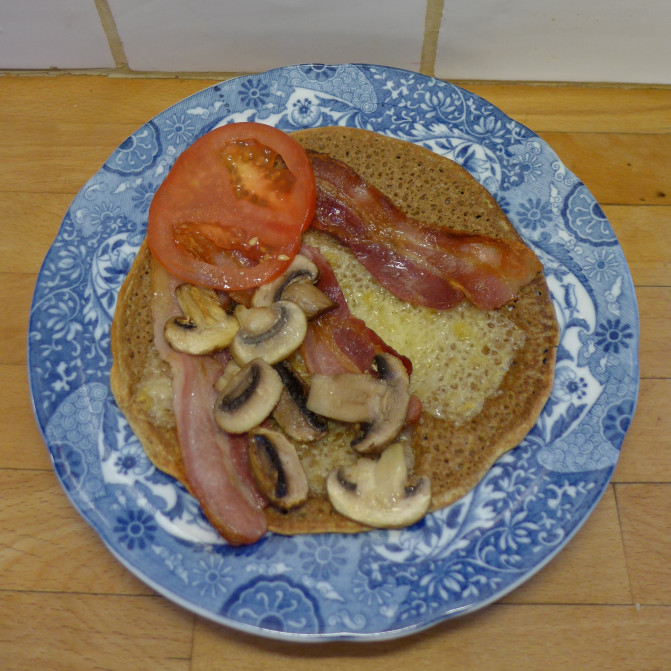Georgia Wild who works at Buxton Museum and Art Gallery guest writes for Explore Buxton about the origin of the famous oatcake as well as giving us the recipe to the famous Derbyshire Oatcakes (or Staffordshire that is!)
Oatcakes in various forms hail from all over the country. For many it is a Scottish food item, somewhere between a cracker and a biscuit, dry and savoury.
But here in the north and east Midlands an oatcake is a very different creature. Taking the form of a dark pancake, the batter; a mix of oatmeal, wheat flour and yeast is left to ferment over night before being cooked in a dry pan or a hot plate. It is often served as a breakfast dish or as a light meal with bacon, cheese, mushrooms, sausage, tomato…
From as far north as Chesterfield to the Derbyshire dales and the Staffordshire moorlands people are proud and protective of their form of oatcake. But nowhere more than the Staffordshire Derbyshire borders do folk vie for its provenance.
From both regions families have tales of a great grandma ladling jugs of live, fizzing oatcake batter onto a hot griddle pan. Written accounts of oatcake consumption in Derbyshire date back to the 1600’s when officials in the High Peak note that the local grain stock consisted of ‘oats and not much else’. In 1817 J. Farey describes an account of oatcakes being made in Pilsbury where an ‘acid fermentation process became excited in batter’ before being poured onto a hot bakestone. More famously is Sir Humphry Davy’s account of Derbyshire miners’ preference of ‘oat-cakes to wheatened bread’. In ‘The Staffordshire Oatcake: A History’ food historian Pamela Sambrooke found seventeenth century probate inventories from the Staffordshire moorlands listing ‘doshens’ and ‘back sprittles’, fermentation buckets and boards to flip oatcakes as well as the tell-tale ‘baxtons’ or bakestones.
It was there in north Staffordshire that oatcake making was taken to a higher level. Here housewives would make batches by the dozen on the range to sell from the windows of terraced houses to miners returning home from their shift. This tradition developed into the more commercial enterprise of oatcake shops still seen in towns of north Staffordshire today. Stoke City football club have grabbed the glory by even naming their football fanzine after the dish.
Recipes are closely guarded which accounts for much of the regional differences. Leek and Buxton have the most substantial of oatcakes, thick with oatmeal. The Potteries towns of Tunstall and Longton have the finest, with oatcakes as lacy and delicate as edible brown doilies. ‘Feed me an oatcake blindfolded,’ my brother used to say. He could always tell which oatcake shop or bakery it was made. For indeed now many of the oatcakes bought in supermarkets are made in large bakeries.
Here I have to confess to being a Staffordshire lass by birth and I am prepared to take the flack if Derbyshire oatcake makers call me out with evidence to the contrary; but I think they originate over the border.
What greater fact could endorse north Staffordshire as being the genesis of the oatcake than it also being the birth place of the pikelet:
‘The Pikelet you ask, what’s that?
It’s a sort of female Oatcake
Smaller, thicker, sweeter
More immediately seductive
Sometimes with currents in
A muffin for the lumpen working class
Best eaten soaked in butter or marge…….’
Arthur Berry, artist and playwright, ‘Homage to the Oatcake’, 1993
Did You Enjoy This?
You might like our regular newsletter. We put all the best events, cultural highlights and offers from Buxton and the Peak District in your inbox every month.
This information will only be used to send you this newsletter. It is stored in Mailchimp.











